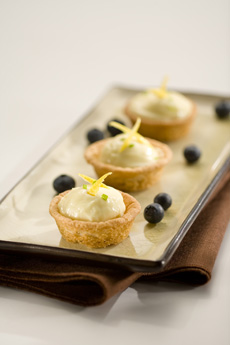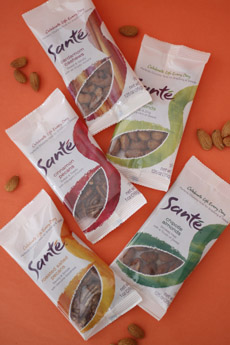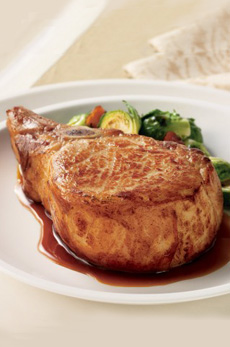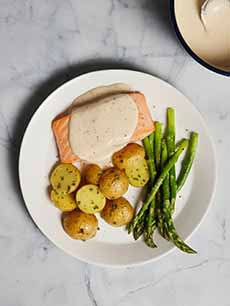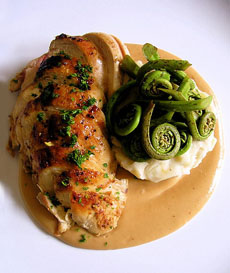You can fill the tart shells with anything. Pudding or berries glazed with melted currant jelly are two more easy options.
This recipe yields 36 mini tarts. For more recipes, visit the CraveCheese.com.
LEMON MASCARPONE TARTS
Ingredients
1 16-ounce tube refrigerated sugar cookie dough
1 pound mascarpone cheese, at room temperature
1 12-ounce jar lemon curd
1 pint fresh raspberries for garnish
Preparation
1. Preheat oven to 350° F. Slice cookie dough into discs 1/4 to 1/2 inch thick. Slice each disc in half. In a greased mini muffin tin, press pieces of cookie dough into each muffin space. Bake for 8 to 10 minutes or until golden in color. Set aside to cool completely.
2. Meanwhile, place lemon curd in a microwaveable dish and heat until spreadable. Whisk curd with mascarpone until light and airy.
3. To assemble tarts, use a small cookie scoop to fill each sugar cookie tart with lemon mascarpone filling. Top with a fresh raspberry.
ABOUT CRAVE BROTHERS
Not only do the Crave Brothers produce a family of award-winning artisan cheeses, they do it using 100% green power and practicing water conservation and recycling. In fact, as a carbon-negative company, they produce more power with their bio digester than they use for their dairy and cheese plant.
The Crave family farms 2,000 acres of rich land in south-central Wisconsin, growing soybeans, corn and alfalfa to use as nutritious feed for their Holstein cows. From the manure digester to water recovery, sustainability is top-of-mind on the farm. Every pound of cheese made by George Crave, a licensed cheese maker, is made with milk from the family’s herd. Crave Brothers Farmstead Cheese produces Mascarpone, Fresh Mozzarella, Les Frères® and Petit Frère® French-style cheeses, Farmer’s Rope® Part-Skim Mozzarella String Cheese and Oaxaca.
MORE MASCARPONE
What is mascarpone?
Make your own mascarpone cheese.
|
